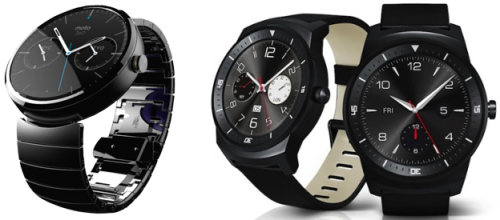
There are a number of cloud storage services available, all with similar functionality. The differences are mostly in the details, like amount of free storage, what platforms the clients are available for, etc. I mentioned some of them in a previous entry on this blog, when I wrote about some useful Android apps.
So what is cloud storage? The first people ask me when I tell them about these storage services is what “the cloud” is. Some even think it is an Apple product or service (because of iCloud). I think Wikipedia has a good explanation:
Cloud computing is the use of computing resources (hardware and software) that are delivered as a service over a network (typically the Internet). The name comes from the use of a cloud-shaped symbol as an abstraction for the complex infrastructure it contains in system diagrams.
Cloud storage is basically that you get space to store your files securely somewhere on the Internet, in a data center somewhere in the world. You then typically install a client program or app on your computer and/or smartphone to access the files. You can then upload a file from one computer or device and access it from any other device. Several of the services also integrate the storage with online editing withouth the user having to download files to edit them and then upload them again.
A typical example is how I use cloud storage. I have SugarSync and DropBox installed on my Android phone. When I take a picture, it is automatically uploaded to DropBox when I have wifi connectivity. I could set it to always upload, even through mobile data, but I set it to wifi only to save on my data plan. The pictures are available at once on my computer at work as well as on my computers at home (two of them with DropBox installed).
This actually saved me during Connect 2013. I store all photos on the SD card in the phone, and that card got fried halfway through the conference. In a normal case, i would have lost all the pictures I had taken that far, but now I had them uploaded to DropBox, and did not lose anything.
I also use DropBox to store certain files I want to be able to access both from home and from work. Like Photoshop files I use for my blog, funny pictures I find online or personal documents like my resume.
I use Microsoft Skydrive OneDrive for some other files, for example a book I am working on. I can then work on the book on any computer (even my Android phone!), even if the devices/computer does not have Word installed. Skydrive OneDrive includes a Word web app, while Google Drive and Box offers the same functionality using Google Docs.
Some services create their own folder on the computers where the shared files are stored, other let you share existing files, like My Documents. Most also allow you to share files with others, either a full directory or individual files. The person you share the files with does not need an account with the service, the file can be accessed through an URL, but having an account makes it easier to share whole directories.
Most of the services uses the freemium business model, you get a certain storage for free, and then you pay if you want more, after you tried it out.
Dropbox gives you 2 GB, but through referrals you can increase this. You can send emails to yoru friends from the site, or simply share a URL. You both get additional space this way. If any of my readers are not using Dropbox yet, use this link to sign up, to get additional space: http://db.tt/Yl563Kf
SugarSync used to offer 2 GB, but recently increased it to 5 GB for free. They also have a referral system similar to Dropbox, feel free to use this link to sign up: http://bit.ly/XmJQNf
Microsoft SkyDrive OneDrive offers 7 GB free, or 25 GB if you signed up early (before April 20012). You use your Hotmail/Live/Outlook.com account to login to the service, and it also includes integration with Office on the desktop, as well as editing files using the Word Web App directly in the browser. Update: As of February 19, 2014 Skydrive has been renamed OneDrive, and a referral system has been added. If anyone signs up using your personal link, you and the other person both get 500MB extra storage. Feel free to sign up using my link: http://bit.ly/1c2RvrI
Box (formerly Box.net) offers 5 GB free storage. When I installed ASTRO File Manager the other day on my Android phone, I was offered 25 GB free storage. I haven’t explored the functionality of the service very much yet
Google Drive is one of the latest entries on the cloud storage arena. It was launched less than a year ago, in April 2012, and offers 5 GB of free storage together with access to Google Docs, the web-based office suite, so documents can be edited directly online.
iCloud is Apples offering. The user get 5 GB for free here as well. Currently iCloud only works on mobile devices using the iOS operating system (i.e. iPhone), but there are clients for both MacOS and Windows. The service allows users to backup their contacts, photos and other data on the phone wirelessly and automatically.
Ubuntu One is a service from Canonical, giving users the customary 5 GB of free storage. It is aimed at Ubuntu users, but there are clients for Windows, MacOS, Android and iOS as well. Ubuntu One also offers music streaming, included in a paid upgrade.
There are more similar services, but the ones listed above are the most popular ones. Wikipedia has an overview of file hosting services, where you can find out more how they compare to each other.





